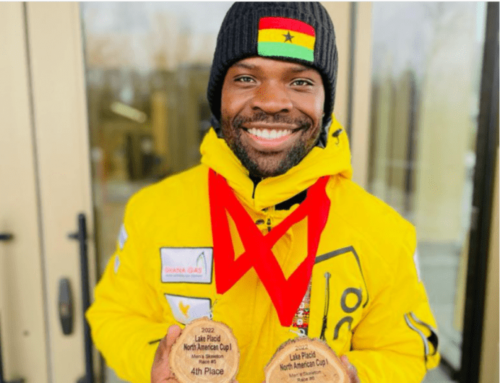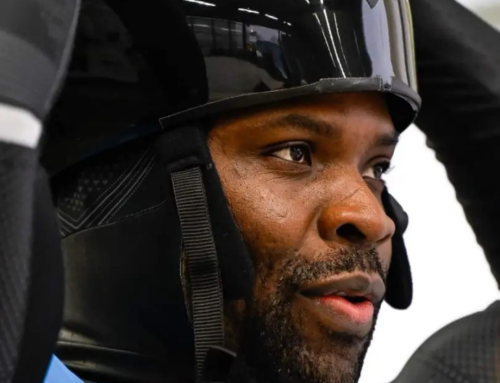The Difference Between Bobsled, Luge, and Skeleton
After becoming the first Ghanaian skeleton racer to make it to the Winter Olympics in Pyeongchang last year, it’s no surprise that everyone wants to know about Akwasi Frimpong.
Who is he? Where did he come from? How did he make it to the Winter Olympics? These are just some of the many questions the world is curious about.
He’s also become an icon who helped bring skeleton racing into the limelight.
What exactly is skeleton racing and how does it differ from luge or bobsled? More and more people are curious about the mystery sport.
Let’s take a look at what sets bobsled, luge, and skeleton racing apart:
Luge vs. Skeleton
While luge and skeleton look similar, there are a few prominent differences. The main difference is that with luge, the athlete has to lie down on their back on a flat sled, feet first, and slide down the ice track. They have to use their body to angle everything and navigate their way through the twists and turns on the track.
With skeleton, the athlete first has to run 40 meters, jump onto the sled face-forward, and then race down the ice track. The speed is extremely important, and the athlete will have to build momentum as they go.
Skeleton is all about speed and timing because there isn’t a scoring system. A slight miscalculation can slow you down. Moreover, the sled for skeleton racing is different than the one used for luge. It’s made from carbon fiber and weighs seven pounds.
Bobsled vs. Skeleton
If you’ve watched “Cool Runnings,” then you know that bobsled is a sport that requires at least two people. The sled is very different and needs to be pushed at least 50 meters before the athletes can jump in. The sled is similar to a miniature car (think a Volkswagen Beetle without the roof).
Unlike a skeleton sled, the sled for bobsledding has a steering mechanism that allows the driver to steer it like a car.
Conclusion
Skeleton racing isn’t an easy sport. It’s all about the timing and speed. It’s also comparatively more dangerous than luge and bobsled. The athlete has to dive in headfirst instead of feet-first; one wrong move can be potentially catastrophic.
But Akwasi has earned a reputation for his speed, timing, and strength! He’s already excelled as a sprinter and a skeleton racer, and continues to push himself as an athlete! He’s determined to bring Gold for Ghana one way or another!
If all things go as planned, Akwasi Frimpong will be bringing home the Gold medal in Beijing Olympics 2022 as the first Ghanaian slider in skeleton.
Check out his awesome journey here.





Leave A Comment
You must be logged in to post a comment.